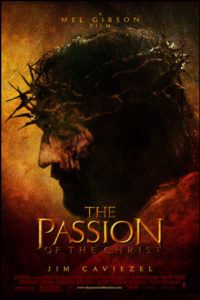 What is the Shroud of Turin? What does it mean?
What is the Shroud of Turin? What does it mean?
Photographer Barrie Schwortz of STURP (Shroud of Turin Research Project) describes the Shroud as “religion and science living on the same piece of cloth.”
And he should know; Schwortz spent five days in 1978 working as a principal photographer documenting the efforts as part of the Shroud of Turin Research Project that was led by physicist John Jackson, who worked for NASA in the 1970s.
When Jackson ran a photograph of the Shroud of Turin through a VP-8 digital analyzer (a specialized computer typically used to map three dimensional simulation models from two dimensional images) at NASA, the remarkable result of his experiment led to the commission of the STURP (Shroud of Turin Research Project) team.
Jackson’s test culled a three dimensional image from the two dimensional photograph…and no other painting or work of art has ever reproduced such a phenomenon. Only photographs of three dimensional objects can produce that same effect. The test result clearly indicated that the fabric had once been used to wrap a three dimensional object, which in this case was the dead body of a human being, believed to be none other than Jesus, the Christ.
No matter what else might be said or written, this religious artifact will always have doubts about it veracity and authenticity due to the lack of a clear chain of custody and the now controversial results of carbon dating tests. Like any other religious artifact, the fact that it exists cannot be offered as irrefutably proof of the existence of God, because proof does not require faith.
Russell Breault of the Turin Education Project said of the Shroud:
It is not a fake, not a painting, not a photograph–in essence we can tell you what is not, but not what it is. The Shroud is either an authentic burial shroud or it isn’t. All tests indicate there is no paint, ink, dye, pigmentation stain, nothing on the cloth used by an artist to fabricate the image….it’s just not there.
Even if the Shroud was as young as the carbon test suggested, there is real human blood and no evidence of any residue, particulates, paint, or any other material on the fabric that would suggest it was produced artificially. Scientific experiments and tests have confirmed this fact. Only the outermost fibers of the cloth are slightly discolored, and those fibers have no paints or dyes.
Whether or not it was the burial shroud of Jesus is arguable, but that it wrapped the dead body of a man is not. In addition to human blood is an image which has a phenomenal characteristic that is not reproducible in any painting or drawing in the world. In layman’s terms, the lights and darks on the fabric are reversed, an inverse of what is normal — just like a photographic negative. Amateur Italian photographer Secondo Pia discovered this most unusual characteristic of the Shroud in 1898 when he was allowed to photograph it. Pia found he could see the image of the crucified man much more clearly in the negative than when viewed by the naked eye. What makes this idea so unusual is that the shroud predates the invention of the camera by more than 500 years, assuming the 1290-1360 date from carbon testing was still valid. When viewing the negative, the image burned into the linen cloth becomes as clear as Stonewall Jackson’s visage on the face of Stone Mountain.
The amount of blood on the fabric and pattern of wounds is astounding….those who have seen Mel Gibson’s movie The Passion of the Christ can relate to the brutality this man suffered, but they were watching a Hollywood reenactment. The Shroud shows the real deal, and it was incredibly brutal.
When computer graphics were used to highlight the bloodstains on the fabric and color them bright red, the shocking result that leapt off the screen was gut-wrenching. This person suffered unbelievable pain, and torture well beyond human comprehension. If this person wasn’t Jesus, the man wrapped in the cloth suffered the same fate as that described by the Gospels.
It was quite easy to count over 120 scourge marks and wounds on the body of the man wrapped in that piece of cloth. There was a sizable wound in the wrist that was clearly visible, where a nail apparently was driven (the other wrist was covered by the first), and a similar puncture wound was on the one foot visible (the feet were also stacked on top of each other.) A wound seemingly made by a spear was evident in his side, and blood drenched his hair from wounds consistent with a crown of thorns.
Breault asked, “Is it possible this fourteen foot piece of linen cloth captured the greatest paranormal event of all time?”
Of course, it is possible.
However, the authenticity of the shroud could never be proved beyond all reasonable doubt to a serious skeptic. And this unsettling fact gives some solace to both the believer and the unbeliever, assuring them that they are in the right. Lack of irrefutable proof in either direction allows everyone to comfortably maintain their existing worldview.
In other words, you may continue to believe whatever you wish.

Speak Your Mind